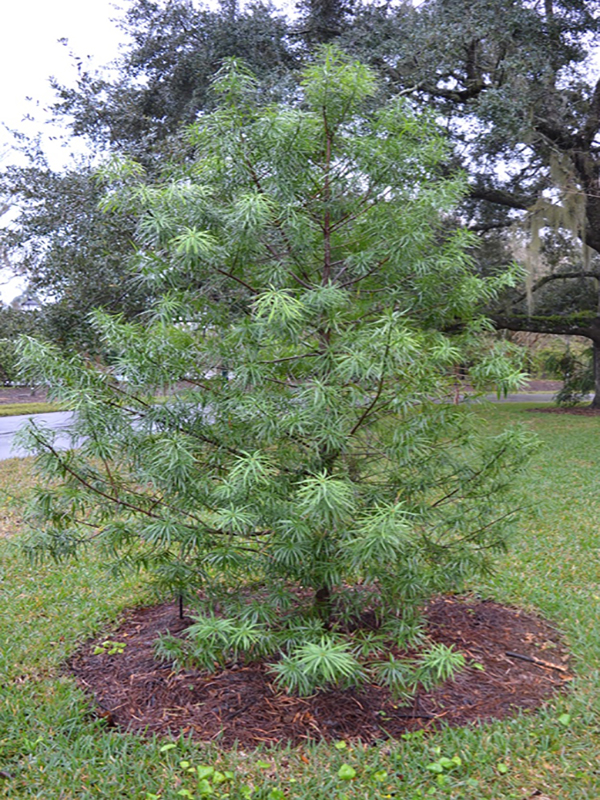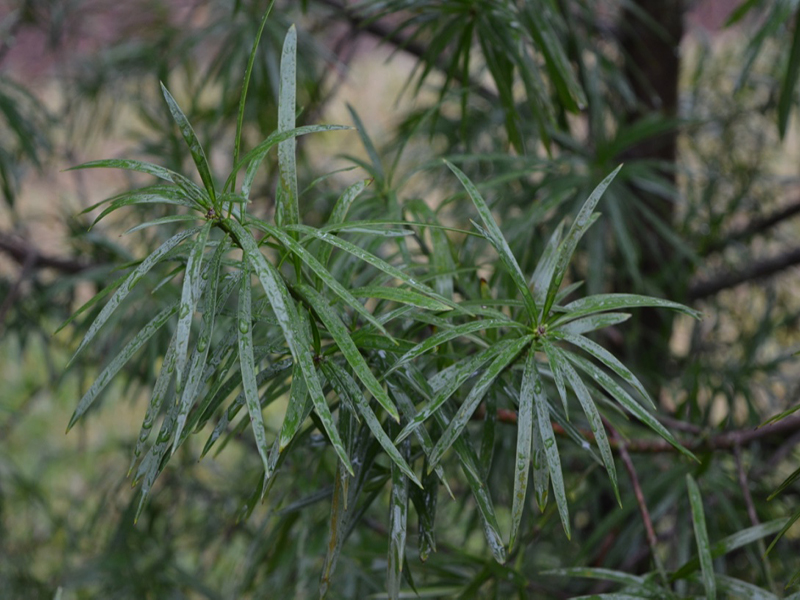Podocarpus henkeli (Henkel's Yellowwood)
Botanical Information
| Family | Podocarpaceae |
| Genus | Podocarpus |
| Species | henkeli |
| Category | Tropicals, Woody |
| Type | Tree (evergreen) |
Details
| USDA Hardiness Zone | 8a - 11 |
| USDA Hardiness Ref. | |
| Canadian Hardiness Zone | Requires cold season protection under glass. |
| Canada Hardiness Ref. | |
| RHS Hardiness Zone | H5 - H1c |
| RHS Hardiness Ref. | |
| Temperature (°C) | -15 - 10 |
| Temperature (°F) | 5 - 50 |
| Height | 20 to 30 m |
Description and Growing Information
| General Description | An evergreen tree with dark grey to pale grey-brown, longitudinally fissured bark. |
| Landscape | Specimen tree for lawns. |
| Cultivation | Grows best in deep and moist, sandy or loamy soil. |
| Notable Specimens | Harry P. Leu Gardens, Orlando, Florida, United States of America. Trebah Garden Trust, Mawnan Smith, Falmouth, Cornwall, United Kingdom. |
| Habitat | Podocarpus henkelii is found from the former Transkei in the Eastern Cape to KwaZulu-Natal. It is most abundant in moist inland forests, locally common in montane forest of the Northern KwaZulu-Natal Drakensberg. The largest concentrations of Podocarpus henkelii are found in areas between Mt Ayliff, Kokstad and Harding. |
| Bark/Stem Description | A straight stemmed forest tree, reaching 20 - 30 m in height. |
| Leaf Description | Bright green to bluish green and glossy above, dull green with a prominent midrib below. The young leaves are pale green and soft. |
| Flower Description | Male cones are erect, pink, and 2-3 cm long and are solitary or in clusters of up to 5. Female cones are solitary, but shortly stalked. |
| Fruit Description | Large and roundish and 1,5-2 cm in diameter and olive green to yellowish green when ripe. |
| Texture Description | It has grey and ridged branchlets and the young shoots are pale green and angular. |
Photographs

Podocarpus henkeli, form, Harry P. Leu Gardens, Orlando, Florida, United States of America.

Podocarpus henkeli, leaf, Harry P. Leu Gardens, Orlando, Florida, United States of America.
Podocarpus henkeli, form, Trebah Garden Trust, Mawnan Smith, Falmouth, Cornwall, United Kingdom.
Podocarpus henkeli, leaf, Trebah Garden Trust, Mawnan Smith, Falmouth, Cornwall, United Kingdom.